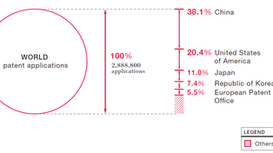What are the differences between copyright and trademark protection?
- Admin
- May 11, 2023
- 1 min read

The protection of images under copyright and the fact that a trademark may consist of an image can result in potential overlap between intellectual property rights. In situations involving a device trademark, determining whether the right holder should claim copyright infringement, trademark infringement, or both requires a careful examination of the laws of the relevant jurisdiction. The answer can have significant implications. To establish copyright infringement, it is necessary to determine whether one image is a copy of another. If an infringer is found to have copied an image that is protected by copyright, they have committed copyright infringement, regardless of the product on which the infringing image is used. The product is considered separate from the image when assessing copyright infringement. However, if the infringer's device imitates the trademark in both colour and form, it would constitute a similar trademark under trademark law. Whether to pursue a claim of copyright infringement, trademark infringement, or both will depend on the specific case and the laws of the relevant jurisdiction. Trademark law may be more flexible in terms of the similarity of devices, but it requires consideration of the classes of goods involved, whereas copyright law provides wider coverage of products but is less flexible as regards the device itself. In summary, determining which intellectual property right to claim depends on the specific circumstances and requires a case-by-case analysis.





















留言